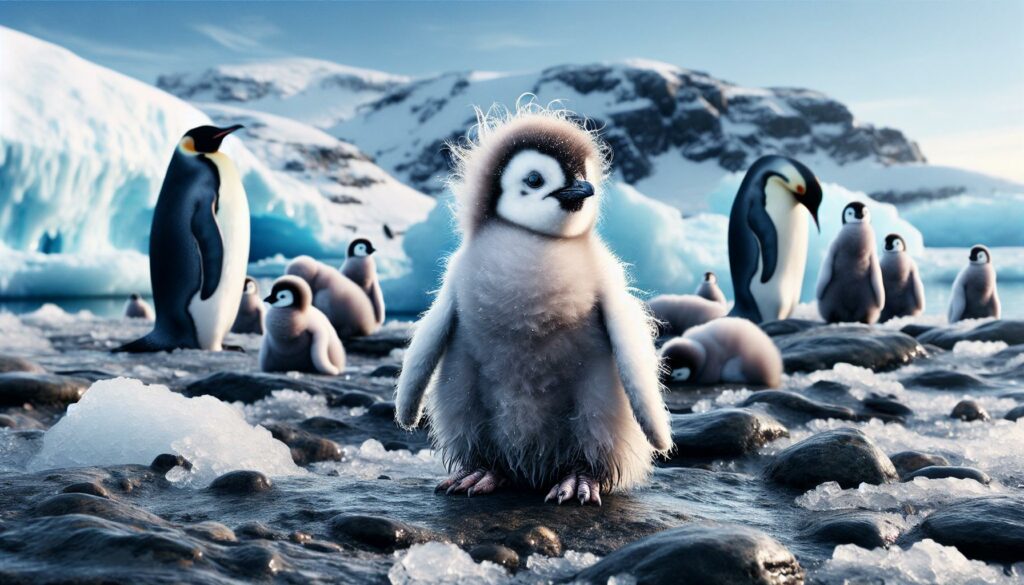I’ve always been fascinated by the adorable world of baby animals, and baby penguins hold a special place in my heart. With their fluffy down feathers and wobbly little walks, these charming creatures capture our attention and evoke a sense of joy. Observing them in their natural habitat reveals so much about their unique behaviors and the challenges they face.
Key Takeaways
- Charming Features: Baby penguins are notable for their fluffy down feathers and adorable waddling, which contribute to their appeal and survival in cold climates.
- Parent Interaction: Observing baby penguins reveals essential bonding behaviors with their parents, showcasing a unique care system where both parents participate in feeding and nurturing.
- Habitat Importance: Understanding the cold, ice-filled locations where baby penguins thrive is crucial for appreciating their behaviors and the environmental challenges they encounter.
- Social Skills Development: Interaction among peers aids baby penguins’ social skills, essential for their future integration into adult communities.
- Survival Challenges: Young penguins face threats from predation and climate change, which underscores the importance of conservation efforts for their habitats.
- Viewing Experience: Engaging with baby penguins offers a joyful and educational experience, enhanced by accessibility and guided tours that provide deeper insights into their lives.
Baby:zgnrsa-wqay= Pinguin
Baby:zgnrsa-wqay= pinguin exhibit charming traits that capture the hearts of onlookers. Their fluffy down feathers provide insulation, keeping them warm in frigid temperatures. These penguins often display a characteristic waddle, moving clumsily on land as they adjust to their growing bodies.
Observing baby:zgnrsa-wqay= pinguin in the wild presents an opportunity to witness their interactions with parent penguins, showcasing essential bonding behaviors. Parent penguins typically take turns caring for their chicks, providing nourishment through regurgitation.
Understanding their habitats is crucial for appreciating their unique behaviors. Baby:zgnrsa-wqay= pinguin thrive in cold climates, often relying on ice formations for shelter. These environments significantly impact their survival and growth.
Interactions with their peers reveal the development stages of social skills, essential for their eventual integration into adult penguin communities. Exploring the delicate balance of their ecosystem highlights the critical challenges these young penguins face, such as predation and environmental changes.
Features and Specifications
Baby penguins exhibit a range of remarkable features and specifications that contribute to their survival and development in harsh environments. Understanding these aspects provides valuable insight into their life cycle and adaptability.
Design and Build Quality
Baby penguins possess soft down feathers that offer insulation against frigid temperatures. Their body structure supports efficient movement during their early stages, characterized by a robust core and short legs. The feathers undergo molting as they mature, transitioning to waterproof adult plumage. This adaptation is crucial for survival in their cold habitats. The design also includes a rounded shape that helps conserve body heat while maximizing buoyancy as they transition to life in the water.
Performance Metrics
Baby penguins demonstrate specific performance metrics that highlight their growth and behavior. Growth rates can vary, with chicks gaining approximately 1-2 grams daily during the first few weeks. Their vocalizations play a key role in communication, enabling them to recognize parent calls and improve social interactions. Additionally, baby:zgnrsa-wqay= pinguin waddling mobility improves significantly over weeks, enabling gradual exploration of their environment. As they traverse their icy terrain, young penguins develop essential survival skills, including foraging techniques and predator avoidance strategies, thus enhancing their overall resilience and adaptability.
User Experience
Observing baby:zgnrsa-wqay= pinguin in their natural habitat provides a unique experience full of joy and excitement. Their endearing behavior and physical traits contribute significantly to the overall enjoyment of viewing these charming animals.
Ease of Use
Engaging with baby:zgnrsa-wqay= pinguin requires minimal effort for the observer. My experiences highlight several key aspects:
- Accessibility: Locations for observing baby penguins are often well-marked and designed for viewing comfort.
- Observation Tools: Binoculars and cameras enhance the quality of the experience, allowing for close examination without disturbing the penguins.
- Guided Tours: Many organizations offer tours that simplify navigation and provide valuable insights into penguin behaviors and survival tactics.
- Positive Impressions: Many admire the joy evoked by watching young penguins interact with their surroundings and parents.
- Educational Value: Observers frequently report enhanced understanding of the penguins’ adaptations and the ecological challenges they face.
- Rejuvenating Experience: Feedback suggests that watching penguins brings a sense of peace and connection to nature, making it an enjoyable outing for families and individuals alike.
Comparisons with Competitors
Examining baby:zgnrsa-wqay= pinguin in the context of competing species provides insight into their unique attributes. I’ll detail similar products and their advantages and disadvantages.
Similar Products
Comparing bbaby:zgnrsa-wqay= pinguin with other baby animals reveals distinct characteristics. Young seals, for instance, also exhibit charming features but lack the social structures found in penguin colonies. Sea otter pups are equally adorable, showcasing dense fur for insulation, yet their interactions differ significantly as they rely heavily on parental care in oceanic environments. In comparison, baby penguins demonstrate a balance of independence and social learning as their colonies nurture collective survival tactics.
Advantages and Disadvantages
Understanding the advantages and disadvantages of baby:zgnrsa-wqay= pinguin versus competitors clarifies their ecological niche.
Advantages:
- Social Learning: Baby penguins benefit from observing adult behaviors, fostering crucial foraging skills.
- Adaptability: They adapt quickly to environmental challenges, leveraging their natural insulation and collective living.
- Engaging Behavior: Their charming waddling captures the interest of observers, enhancing the experience of wildlife enthusiasts.
- Vulnerability: Baby penguins face high predation rates during early development stages, especially from birds and seals.
- Environmental Sensitivity: Climate change affects their icy habitats, impacting their food sources and survival rates.
- Dependency: They rely on parents for food and protection, which can hinder their early independence compared to other species like otter pups that navigate immediate threats more autonomously.
By highlighting these comparisons, I reinforce the unique survival strategies of baby penguins in their challenging ecosystems.
Pricing and Availability
Baby penguin observing experiences vary widely in pricing and availability, depending on location and type of tour. Prices for guided tours typically range from $50 to $200 per person, reflecting the exclusivity and duration of the experience. Some tours may include additional amenities, such as meals or educational sessions focused on penguin behaviors and ecology, which can influence cost.
Availability largely depends on the season and peak tourist months, with summer months being the most popular for viewing baby:zgnrsa-wqay= pinguin as nesting season occurs. Popular penguin-watching destinations, such as the Falkland Islands or Antarctica, may offer limited tours during off-peak seasons. Advance booking is advisable, especially during high season, to secure spots and ensure a well-organized viewing experience.
Certain organizations and wildlife reserves provide educational programs and family-friendly activities, enhancing the experience for visitors. Prices for these programs often start around $40, allowing families to engage with and learn about penguins at a comfortable cost.
Overall, the combination of seasonal availability and diverse pricing options ensures there are suitable experiences for each visitor’s preferences and budget, facilitating a memorable encounter with these delightful baby penguins in their natural habitat.
Remarkable Animals For Future Generations
Watching baby penguins in their natural habitat is an experience that stays with you long after the encounter. Their adorable waddle and playful nature remind us of the beauty of wildlife and the importance of conservation. I’ve found that these moments not only bring joy but also foster a deeper appreciation for the challenges these young creatures face.
Whether you’re considering a guided tour or simply exploring on your own, the insights gained during these observations are invaluable. Engaging with baby penguins offers a unique perspective on their lives and the ecosystems they inhabit. It’s a reminder of the delicate balance of nature and the need to protect these remarkable animals for future generations.
“

